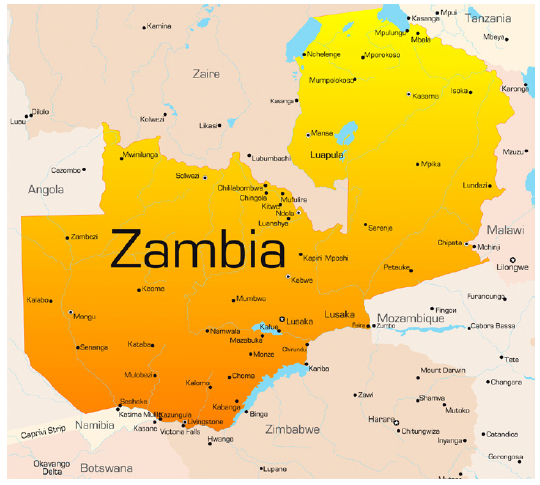Borrower Overview
TriLinc has provided financing to a fertilizer distributor in Zambia. Incorporated in 2004, the borrower is one of the largest crop enhancement blenders and distributors in Zambia and is known to be the only company that offers mixed inorganic and organic fertilizer varieties in the country. Although Zambia’s agricultural sector represents approximately 85% of its labor force and 19.8% of its annual GDP, growth in this sector is limited by inefficient natural resource management techniques, soil degradation, and low levels of productivity.1 As a fertilizer distributor, the borrower plays a crucial role in promoting agricultural productivity and food security throughout Zambia. The borrower provides blends for specific crop types and also distributes its product in various sizes, thereby serving the needs of subsistence farmers as well as commercial growers. TriLinc’s financing provides short-term liquidity to the borrower to secure future purchases of additional fertilizer product from its international supplier network. Historically, such liquidity has allowed the borrower to strengthen its position in the Zambian fertilizer market as a reliable and consistent supplier in the country’s agricultural value chain.
Market Overview

Zambia is classified as a lower-middle income country by the World Bank.1 Between 2010 and 2013, GDP growth rates averaged just over 7.0%.2 Zambia’s main exports have traditionally been concentrated in copper/cobalt, cobalt, electricity, tobacco, flowers, and cotton.3 Conversely, the country’s main imports have been focused in machinery, transportation equipment, petroleum products, electricity, fertilizer, foodstuffs, and clothing.3
Zambia meets TriLinc’s country standards for its performance across relevant growth, stability and access metrics.4 In 2013, it ranked 83rd in the world and seventh across the Sub-Saharan African region on the World Bank’s Ease of Doing Business index.5 As the 12th largest economy in Sub-Saharan Africa,6 the country benefitted from the $32 billion in direct foreign investment that was estimated to have flowed through the region in 2013.7 Robust domestic demand across Sub-Saharan Africa has helped spur real GDP growth of up to 4.7% in 2013, and is expected to remain stable at 4.7% in 2014.7 Looking ahead in 2015 and 2016, overall regional GDP growth is projected to strengthen to 5.1%.7
Additional Sustainability and Impact Highlights
- The borrower provides agronomic training to small-scale farmers and their employees so as to promote increased crop yields, efficiency, productivity, and land management techniques.
- The borrower provides three distinct fertilizer products for distribution to small-scale farmers and farmer associations throughout Zambia through the Government of Zambia’s Farmer Input Support Program.
- The borrower offers crop-specific fertilizer blends for enhanced yields and distributes its product in both industry standard packaging for commercial customers and price-accessible packaging for subsistence endusers.
- The borrower’s management practices include waste reduction and energy savings programs, subsidized meals for employees, and fair hiring, with a preference for employees from local communities.
1World Bank, Doing Business 2014, Economy Profile: Zambia. 2World Bank, World Development Indicators Database, 2014. 3CIA, The World Factbook, 2014: Zambia. 4There is no assurance that our investment in this company or this market will be successful. 5The World Bank, Doing Business 2014, Understanding Regulations for Small and Medium-Size Enterprises. 6World Bank: GDP Ranking; 2014. 7The World Bank, Global Economic Prospects, 2014.
The above information is as of the initial date of investment: July 17, 2014
This borrower is no longer a TriLinc fund investment.
TriLinc originally performed an SDG mapping exercise in December 2017 to map all of our borrower companies, both current and exited from our portfolios, to specific SDGs based off of business activity. TriLinc’s official SDG alignment methodology was not finalized until June 30, 2018. For borrowers that had exited TriLinc’s portfolios prior to this time period, the selected SDGs for these borrower are a reflection of what TriLinc believes would have been the SDG alignment if 1) the SDGs had been in effect and 2) TriLinc had integrated the SDG alignment while the company was in the portfolio. The SDG mapping presented does not include input from Investment Partners or borrower companies given that the companies were no longer in the portfolio when the alignment was finalized.
An investment with TriLinc carries significant fees and charges that will have an impact on investment returns. Information regarding the terms of the investment is available by contacting TriLinc. This is a speculative security and, as such, involves a high degree of risk. Investments are not bank guaranteed, not FDIC insured and may lose value or total value. Some investments may have been made in an investment vehicle that is no longer open for investment. The highlighted investment may or may not have been profitable. There is no guarantee that future investments will be similar.
Want to learn more? Contact Us.
